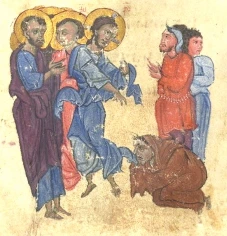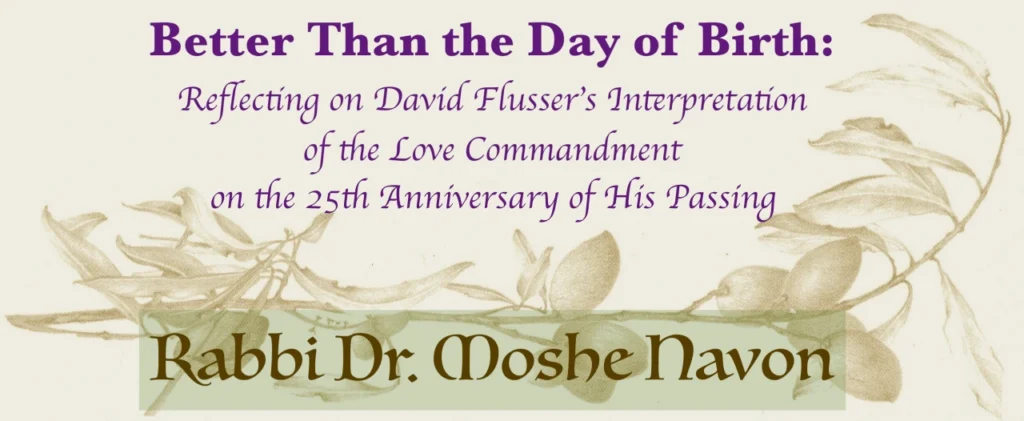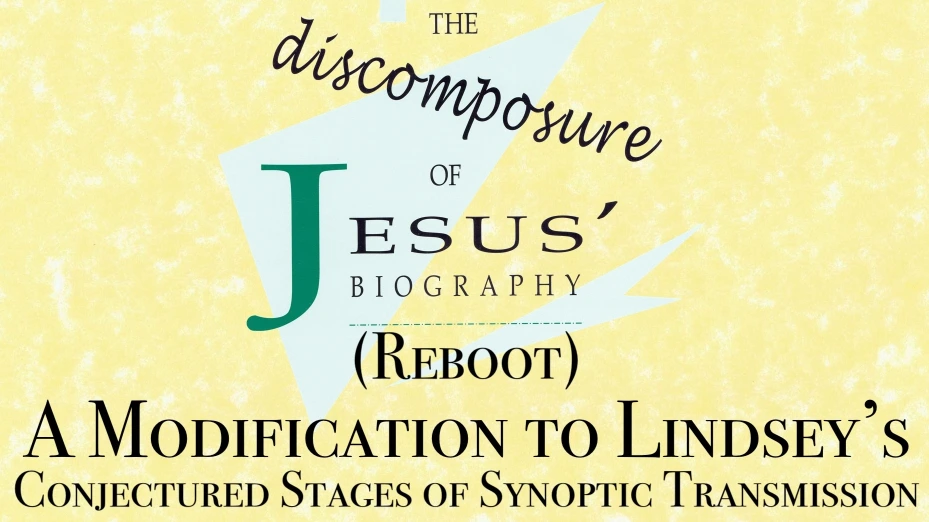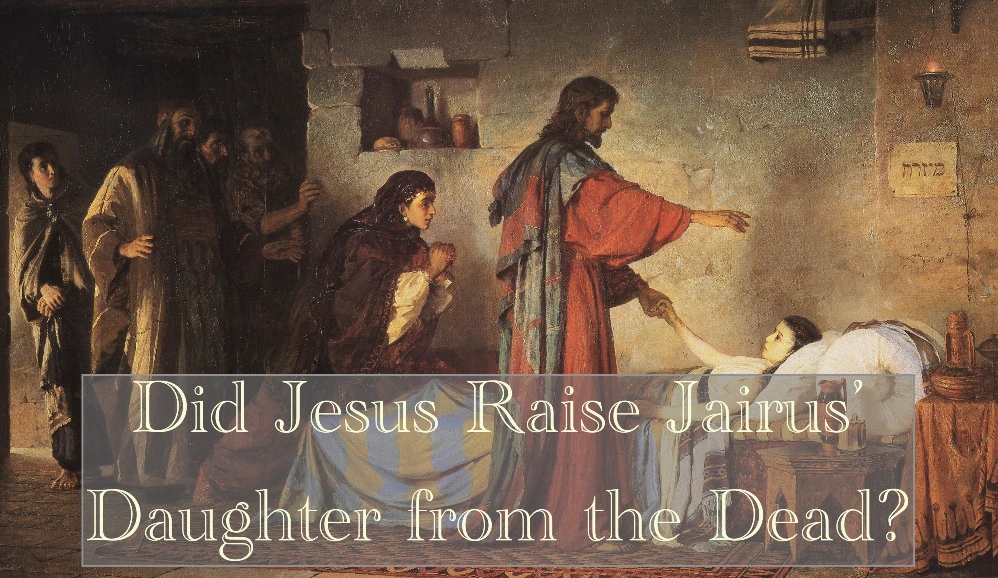How to cite this article: JP Staff Writer, “Was the Hemorrhaging Woman Jesus Healed Named Rebekah?” Jerusalem Perspective (2025) [https://www.jerusalemperspective.com/30992/].
In the three canonical versions of the story of Jesus and the zavah (a woman with an abnormal genital discharge), the hemorrhaging woman is unnamed. That the recipient of a healing miracle should remain anonymous in the Gospel texts is the norm rather than the exception, so the fact that the woman is unnamed in the Gospels is hardly remarkable.
What is surprising is that this anonymous woman is given a name in the ancient Christian apocryphon known as the Gospel of Nicodemus, also called the Acts of Pilate, which dates from the 4th-5th century C.E.[1] This apocryphal source depicts a fictitious scene in Jesus’ trial before Pilate in which people with whom Jesus had positive interactions during his ministry speak up in his defense. Among these character witnesses are Nicodemus and several people Jesus healed (the paralyzed man, the man born blind, the man with scale disease), including the woman who touched Jesus’ tzitzit and was healed of her hemorrhage.
Here is how the Gospel of Nicodemus describes the former zavah’s testimony:
Καὶ γυνή τις, ὄνομα Βερνίκη, ἀπὸ μακρόθεν κράζουσα εἶπεν· αἱμορροοῦσα ἤμην, καὶ ἡψάμην τοῦ κρασπέδου τοῦ ἱματίου αὐτοῦ, καὶ ἐστάλη μου ἡ ῥύσις τοῦ αἵματος ἡ δι’ ἐτῶν δώδεκα.
And a certain woman, named Bernice [Βερνίκη ⟨Ber·NI·kē⟩; Latin: Veronica], crying from afar, said, “I was hemorrhaging, and I touched the fringe of his cloak, and my flow of blood was stopped, which had lasted twelve years.” (Gospel of Nicodemus [Acts of Pilate] [A] §7)[2]
There are a few noteworthy details about the former zavah’s testimony in this source. The former zavah’s statement, αἱμορροοῦσα ἤμην (hai·mor·ro·OU·sa Ē·mēn, “I was hemorrhaging”), echoes Matthew’s καὶ ἰδοὺ γυνὴ αἱμορροοῦσα (kai i·DOU gū·NĒ hai·mor·ro·OU·sa, “And behold! A hemorrhaging woman”; Matt. 9:20) rather than Mark’s and Luke’s γυνὴ οὖσα ἐν ῥύσει αἵματος (gū·NĒ OU·sa en HRŪ·sei HAI·ma·tos, “a woman being in a flow of blood”; Mark 5:25; Luke 8:43). The former zavah specifies that she touched the fringe of Jesus’ cloak (i.e., his tzitzit), a detail which is present in Matthew and Luke (Matt. 9:20; Luke 8:44) but not in Mark (Mark 5:27). And the woman says that her flow of blood stopped (καὶ ἐστάλη μου ἡ ῥύσις τοῦ αἵματος [kai es·TA·lē mou hē HRŪ·sis TOU HAI·ma·tos, “and my flow of blood stopped”]), which echoes Luke’s ἔστη ἡ ῥύσις τοῦ αἵματος αὐτῆς (ES·tē hē HRŪ·sis TOU HAI·ma·tos av·TĒS, “her flow of blood stood”; Luke 8:44) rather than Mark’s ἐξηράνθη ἡ πηγὴ τοῦ αἵματος αὐτῆς (ex·ē·RAN·thē hē pē·GĒ TOU HAI·ma·tos av·TĒS, “and her spring of blood dried up”; Mark 5:29). What explains this constant preference for non-Markan vocabulary? Did the author of the Gospel of Nicodemus alternate between the Matthean and Lukan versions of the story to the exclusion of Mark, or was he familiar with a pre-Markan version of the account that was also known to the Matthean and Lukan evangelists?
For our purposes, however, what is extraordinary is that the Gospel of Nicodemus gives the former zavah’s name as Βερνίκη (Ber·NI·kē, “Bernice”), a name that is never suggested in the canonical texts.[3] Sometimes persons who remained anonymous in the canonical texts were given names in later sources.[4] The magi who presented the young Jesus with gold, frankincense, and myrrh, for instance, received the names Caspar, Melchior, and Balthazar in later Christian tradition. There is no reason to suppose that these were the actual names of the historical magi;[5] it is more likely that the mysterious figures in Matthew’s Gospel were given names and backstories as traditions about them developed. The same could be true of the name the Gospel of Nicodemus gives to the former zavah, but there are a few reasons not to dismiss the woman’s name out of hand.
First, the Gospel of Nicodemus does not invent names for the other people Jesus healed who give testimony on Jesus’ behalf (viz., the paralyzed man, the blind man [named Bartimeus in Mark], the man with scale disease). If the author of the Gospel of Nicodemus did not feel compelled to give names to these other individuals, why did he give the name Bernice to the former zavah? The reason may be that the author of the Gospel of Nicodemus was drawing upon a pre-existing Christian tradition regarding the woman’s name.
Second, the name the author of the Gospel of Nicodemus gives to the former zavah, Bernice, is not implausible for a Jewish woman of Palestine in the first century C.E. In the book of Acts a woman named Βερνίκη (“Bernice”) is present at Paul’s hearing before Festus (Acts 25:13, 23; 26:30). This Bernice was the daughter of King Agrippa I and sister of Agrippa II. Her grandmother had also been named Bernice. Josephus refers to this same Bernice as both Βερνίκη (Ber·NI·kē, “Bernice”) and Βερενίκη (Be·re·NI·kē, “Berenice”).[6] The former is simply a contracted form of the latter.[7] The name Bernice also occurs on pre-70 C.E. ossuaries and in first-century C.E. tomb inscriptions, so it must have been a fairly common name for Jewish women even if they did not belong to the Herodian dynasty.
One ossuary has a bilingual inscription in which the Greek name Βερνίκη is accompanied by the Hebrew letters בנקי (b-n-q-i), evidently a misspelling of ברנקי (b-r-n-q-i).[8] So if there is any truth to the tradition that the former zavah’s name was Bernice, this does not rule out the possibility that she was a Hebrew speaker.
On the other hand, a first-century C.E. tomb inscription has the names ΒΕΡΕΝΙΚΗΣ (Be·re·NI·kēs, “Berenice”) and ΡΕΒΚΑΣ (Hreb·KAS, “Rebekah”) in close proximity to one another, which has suggested to some scholars that Βερνίκη/Βερενίκη served as the Greek equivalent of רִבְקָה (riv·QĀH, “Rebekah”).[9]
That one individual should have both a Greek and a Semitic name should not be unfamiliar to readers of the New Testament. The apostle Paul used the Greek name Παῦλος (PAV·los, “Paul”) and the Hebrew name Σαῦλος (SAV·los, “Saul”) = שָׁאוּל (shā·’ŪL, “Saul”). In the case of Paul/Saul the equivalence was based on the similarity of Παῦλος to the Hellenized form Σαῦλος. Another NT example of a single person bearing a Greek and a Semitic name is Dorcas/Tabitha (Acts 9:36). The Greek name Δορκάς (Dor·KAS) means “deer” or “gazelle.” In Aramaic טַבְיָא (ṭav·YĀ’) means “deer” or “gazelle,” with טַבְיְתָא or טְבִיתָא being the feminine form.[10] In the case of Dorcas/Tabitha the dual names are not based on similarity of sound but on sameness of meaning.[11]
In any case, if Βερνίκη (Ber·NI·kē, “Bernice”) was used as a Greek equivalent to רִבְקָה (riv·QĀH, “Rebekah”), it must have been due to the similarity between Βερνίκη and the Hellenized form Ῥεβκάς (Hreb·KAS), since both names share the consonants ρ-β-κ (r-b-k), albeit in different orders.

The most we can say about the tradition preserved in the Gospel of Nicodemus that the former zavah’s name was Bernice is that it does not lack verisimilitude. First-century Jewish women did bear this name, and perhaps the former zavah’s Greek name was remembered by the early Christian community and passed down through oral traditions until it was recorded by the author of the Gospel of Nicodemus. Whether behind the tradition that the former zavah’s name was “Bernice” stands an even older tradition (or a historical fact) that her name was Rebekah cannot be answered and must remain firmly in the realm of speculation. Nevertheless, the exercise of asking whether the name of the hemorrhaging woman Jesus healed was Rebekah has taught us a few things along the way.
Be sure to check out these recent JP articles:
- Like Every Sparrow Falling: The Symbolism of Sparrows in a Saying of JesusThe multivalent image of the sparrow in ancient Jewish thought made it a useful vehicle for conveying messages about human and divine relationships.
- Better Than the Day of Birth: Reflecting on David Flusser’s Interpretation of the Love Commandment on the 25th Anniversary of His PassingI regard the twenty-fifth anniversary of David Flusser’s passing not solely as a day of loss, but also as the day that gave him to the world.
- 25 Years Since David Flusser’s PassingProfessor Serge Ruzer shares his recollections of Israeli scholar David Flusser on the twenty-fifth anniversary of his death.
- The Discomposure of Jesus’ Biography (Reboot): A Modification to Lindsey’s Conjectured Stages of Synoptic TransmissionHow did the Hebrew biography of Jesus disintegrate into the isolated pericopae that make up the Synoptic Gospels?
- Was the Hemorrhaging Woman Jesus Healed Named Rebekah?Is it possible to retrieve the name of the woman who touched Jesus’ tzitzit?
- Did Jesus Raise Jairus’ Daughter from the Dead?Should readers give more weight to the bystanders’ impressions or to the words Jesus said?
- [1] On the date of the Gospel of Nicodemus, see Bart D. Ehrman and Zlatko Pleše, eds. and trans., The Apocryphal Gospels: Texts and Translations (Oxford: Oxford University Press, 2011), 420. ↩
- [2] Text according to Ehrman and Pleše, The Apocryphal Gospels, 438. ↩
- [3] A medieval witness to the Gospel of the Nazareans claims that this apocryphal Gospel named the hemorrhaging woman as “Mariosa.” However, another medieval witness claims that it was the synagogue ruler’s daughter whose name was “Mariossa.” See New Testament Apocrypha (2 vols.; ed. Wilhelm Schneemelcher and R. McL. Wilson; Philadelphia: Westminster Press, 1963), 151 (no. 29), 152 (no. 30). These conflicting reports do not inspire confidence. See Richard Bauckham, Jesus and the Eyewitnesses: The Gospels as Eyewitness Testimony (Grand Rapids: Eerdmans, 2006), 44. ↩
- [4] This is true of ancient Jewish sources as well as ancient Christian texts. ↩
- [5] If, indeed, the magi were themselves historical figures. ↩
- [6] See Karl Heinrich Rengstorff, ed., A Complete Concordance to Flavius Josephus: Unabridged Study Edition (2 vols.; Leiden: Brill, 2002), 2:2118. ↩
- [7] See Tal Ilan, Lexicon of Jewish Names in Late Antiquity, Part I: Palestine 330 BCE–200 CE (TSAJ 91; Tübingen: Mohr Siebeck, 2002), 315 n. 11. ↩
- [8] See ibid., 316 n. 17. ↩
- [9] See ibid., 248 n. 5. ↩
- [10] Walter Bauer, Frederick W. Danker, William F. Arndt, and F. Wilbur Gingrich, A Greek-English Lexicon of the New Testament and Other Early Christian Literature (3d ed.; Chicago: University of Chicago Press, 2000), 987. ↩
- [11] A potentially more complicated example is Peter/Cephas. The name Πέτρος (PE·tros, “Peter”) comes from Greek, but could have served as a nickname in Hebrew as פֶּטְרוֹס (peṭ·RŌS). Κηφᾶς (Kē·FAS, “Cephas”) is the Hellenized form of כֵּפָא (kē·FĀ’), which has a meaning equivalent to Petros. It could be that in Gentile areas where Aramaic and Greek were spoken Peter acquired the nickname Cephas. For a fuller discussion see David N. Bivin, “Matthew 16:18: The Petros-petra Wordplay—Greek, Aramaic, or Hebrew?” Jerusalem Perspective 46/47 (1994): 32-36, 38 [https://www.jerusalemperspective.com/2718/]. ↩








